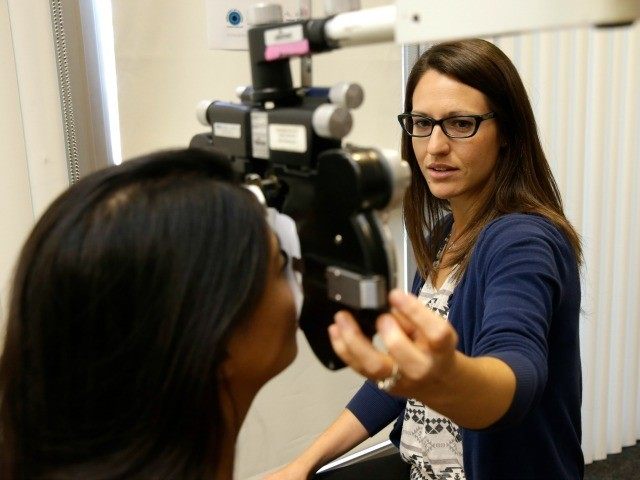A team of optics researchers from Switzerland’s Ecole Polytechnique Federale de Lausanne (EPFL) is developing telescopic contact lenses that may help people suffering from age-related macular degeneration (AMD), which may affect 196 million people worldwide by 2020.
AMD causes cells in the macula, which lies in back of the retina, to wither away, causing a resultant loss of central vision, although peripheral vision is unaffected. On a global level, it ranks third among the most prevalent causes of blindness.
Injecting anti-growth factors directly into the retina can be tried, but Neil Bressler, chief of the Retina Division at the Johns Hopkins Wilmer Eye Institute, told Newsweek, “The treatment typically can stop further vision loss but often does not improve vision.” The Food and Drug Administration approved an implantable miniature telescope, but Eric Tremblay of EPFL pointed out that the implant is unilateral, leaving one eye still affected by the disease.
The EPFL’s contact lenses act as the traditional Galilean telescope did, magnifying the image while zooming in while acting like built-in binoculars. They have worked successfully in lab tests, but EPFL is still wary of marketing them. Tremblay, noting the 1.55 millimeters thickness of the lens compared to the normal lens, no more than .35 mm thick, admitted, “The biggest challenge to making this a viable product is oxygenation.” Thus EPFL has been attempting to oxygenate the eye more completely.
Bressler is still not convinced of the EPFL lens’ efficacy, noting that people suffering from AMD are usually over 70 and “may not have the dexterity or other fine motor skills needed to place contact lenses on the eye,” as well as “more prone to infection from the lens or irritation.”
The Defense Advanced Research Projects Agency (DARPA) funded EPFL, likely because another project in the works features glasses that work with the binocular contacts so someone could choose between “binocular” and “normal” vision by blinking. A soldier thus equipped could use telescopic vision with a single blink.

COMMENTS
Please let us know if you're having issues with commenting.